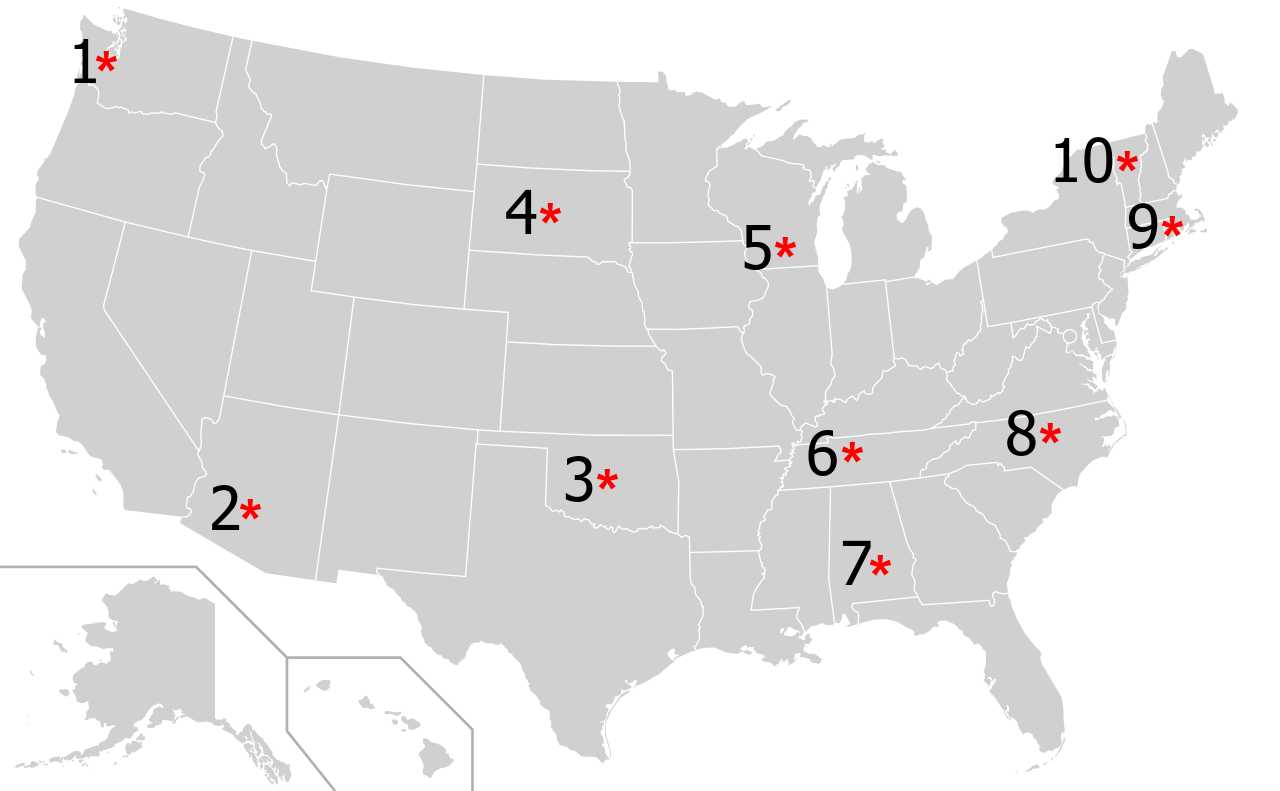
Alphabetical America, Part Four Quiz
The penultimate quiz in my series of labeling US State Capitals, featuring the fourth set of ten cities ordered alphabetically (by city name, not state). Can you match the correct capital city name (Madison to Raleigh) to its geographical location?
A label quiz
by reedy.
Estimated time: 3 mins.
